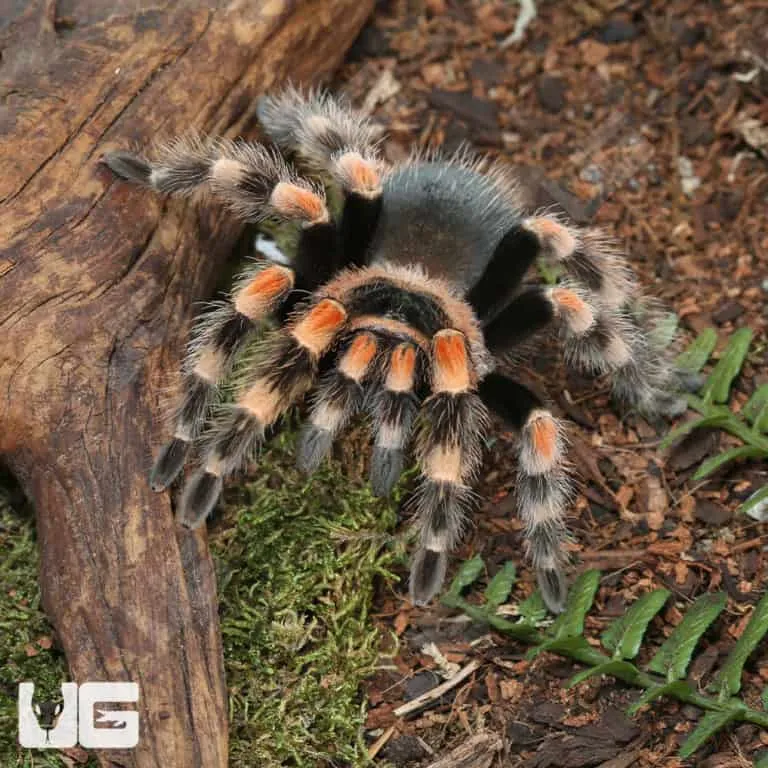Why Do Mexican Red Knee Tarantulas Dig Holes
The captivating Mexican Red Knee Tarantula (Brachypelma hamorii) is a terrestrial species renowned for its striking appearance and docile temperament. One of the most fascinating aspects of their behavior is their tendency to dig burrows. Understanding why these arachnids engage in this behavior is crucial for providing them with proper care and ensuring their well-being in captivity. Digging is not merely a random activity; it is an essential part of their natural instincts, survival strategies, and overall lifestyle. Whether in the wild or in a terrarium, the act of creating and inhabiting a burrow serves multiple purposes, all contributing to the tarantula’s comfort, safety, and health. This behavior highlights the importance of understanding the specific needs of these remarkable creatures and replicating their natural environment as closely as possible to keep them thriving.
Natural Instinct
For Mexican Red Knee Tarantulas, digging is deeply rooted in their evolutionary history. In their natural habitat, these tarantulas spend a significant portion of their lives underground, constructing elaborate burrows that serve as their homes. This instinct is not something they learn; it is an inherent behavior passed down through generations. The impulse to dig and create a burrow is as natural to a Red Knee Tarantula as the need to eat or molt. It is a fundamental aspect of their identity, providing a sense of security and a safe haven from the elements and potential predators. In captivity, even though threats might be limited, this instinct remains strong, driving them to seek out suitable materials and spaces to create their underground retreats. The act of digging itself is a form of enrichment, allowing the tarantula to express its natural behaviors and maintain its psychological well-being.
Protection from Predators
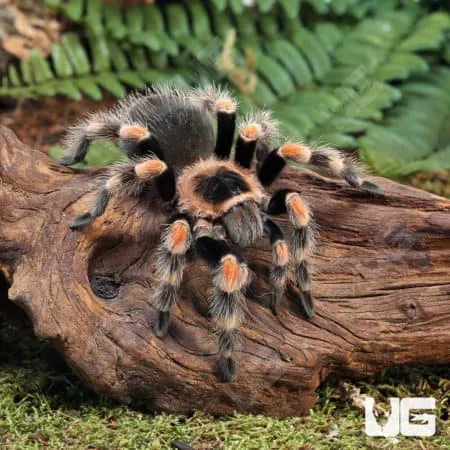
In the wild, Mexican Red Knee Tarantulas face numerous threats from predators, including birds, lizards, and other arachnids. Their burrows offer a critical line of defense against these dangers. The underground tunnels provide a secure refuge where tarantulas can hide from predators, effectively minimizing the risk of being caught. The depth and structure of the burrow act as a natural barrier, making it difficult for predators to reach them. Furthermore, the burrow provides a controlled environment, protecting the tarantula from extreme temperatures and weather conditions, which can be especially harsh in their native habitats. By retreating into their burrows, tarantulas can conserve energy, avoid confrontation, and increase their chances of survival. Replicating this protective environment in captivity through appropriate substrate and enclosure design is vital for their well-being.
Temperature Regulation
Burrows also play a significant role in thermoregulation for Mexican Red Knee Tarantulas. The temperature underground tends to be more stable than on the surface, providing a buffer against extreme heat and cold. During the hotter parts of the day, tarantulas can retreat into their burrows to escape the sun’s intense heat. Similarly, during colder periods, the burrow offers a warmer microclimate. This ability to regulate their body temperature is crucial for their metabolism, growth, and overall health. By controlling their exposure to temperature fluctuations, tarantulas conserve energy and can maintain optimal physiological functions. When setting up a tarantula enclosure, providing suitable substrate and maintaining appropriate temperature gradients help the tarantula regulate its body temperature, mimicking the natural environment and supporting its health.
The Perfect Substrate
The choice of substrate is paramount to a Mexican Red Knee Tarantula’s burrowing behavior. The right substrate not only allows the tarantula to dig and create its home but also provides the necessary humidity and stability for a healthy environment. Substrate selection is a cornerstone of tarantula care and should be chosen based on its ability to meet the specific needs of the species. The ideal substrate should be able to retain moisture, allowing for the creation of a humid microclimate, while also providing structural integrity to support the burrow. Understanding the properties of various substrates and their impact on the tarantula’s well-being is essential for any tarantula keeper.
Substrate Depth
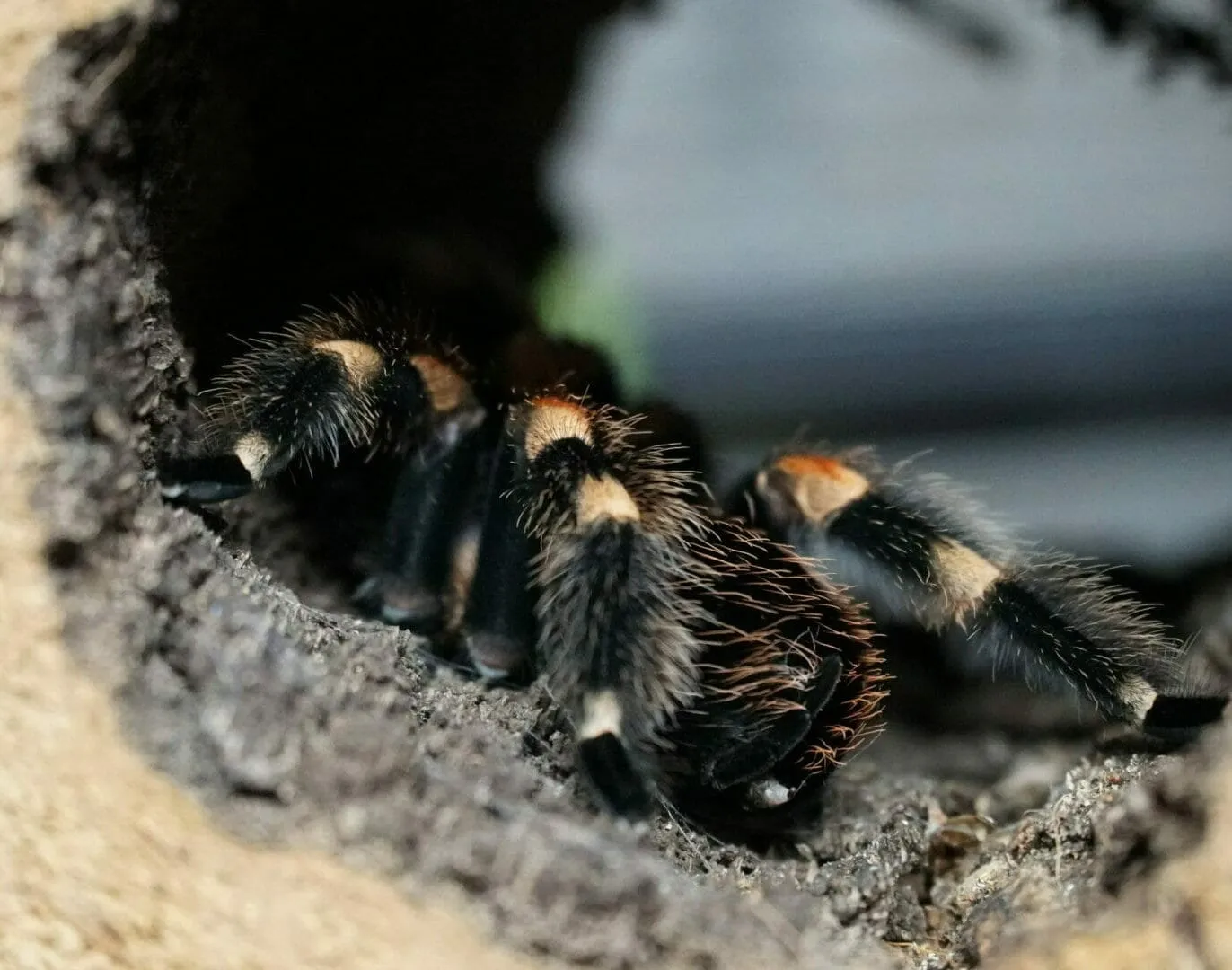
The depth of the substrate is a critical factor in allowing a Mexican Red Knee Tarantula to dig and create a comfortable burrow. The substrate should be deep enough to allow the tarantula to fully express its natural digging behavior. As a general guideline, the substrate should be at least as deep as the tarantula’s leg span, although deeper substrates are often preferred to allow for more complex burrow structures. A substrate that is too shallow will limit the tarantula’s ability to dig and might lead to stress or frustration. The depth of the substrate not only facilitates burrowing but also influences the humidity levels within the enclosure. A deeper substrate can retain more moisture, creating a more humid environment, which is beneficial for molting and overall health. Monitoring the depth and condition of the substrate is essential to ensure that the tarantula can maintain its burrow.
Substrate Type
Several substrate types are suitable for Mexican Red Knee Tarantulas, each with its own benefits. A popular choice is a mixture of coconut fiber (also known as coco coir), peat moss, and a small amount of vermiculite. Coconut fiber provides excellent moisture retention and creates a naturalistic feel. Peat moss also helps maintain humidity and provides a good structure for burrowing. Vermiculite can be added to improve the substrate’s drainage and prevent mold growth. Another option is a mixture of topsoil and sand, which mimics the tarantula’s natural habitat. Whatever substrate is chosen, it is crucial that it is free of pesticides or other harmful chemicals. The substrate should be lightly moistened to maintain humidity levels but not so wet that it becomes soggy. Regularly monitoring the substrate for signs of mold or decay is important to ensure the health of the tarantula and the integrity of its burrow.
Creating the Ideal Burrow
Creating an ideal burrow environment involves careful consideration of the enclosure, substrate, and other environmental factors. Replicating the tarantula’s natural habitat as closely as possible is vital for its comfort and well-being. Providing the right conditions encourages the tarantula to exhibit its natural digging behaviors and establish a safe, secure home. The tarantula’s burrow is not just a hole in the ground; it’s a complex structure that provides protection, regulates temperature, and facilitates molting. Understanding how to set up the enclosure to support this behavior is a key part of responsible tarantula care.
Choosing the Right Enclosure
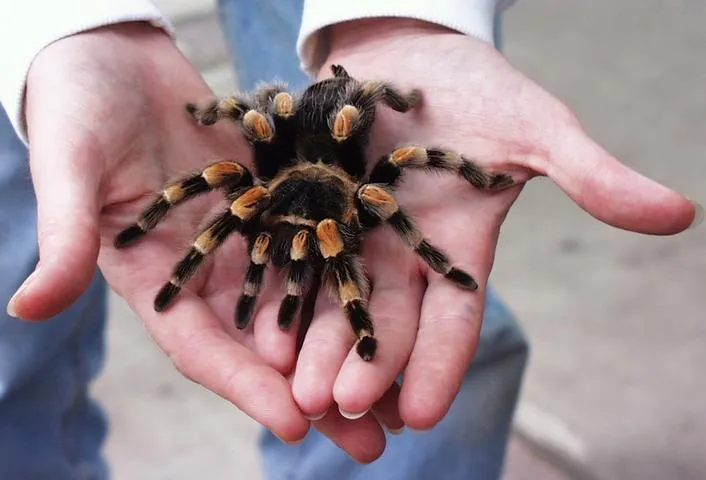
The size and type of the enclosure are crucial for providing a suitable environment for burrowing. The enclosure should be large enough to accommodate the tarantula and its burrow comfortably. A good rule of thumb is to choose an enclosure that is at least three times the tarantula’s leg span in width and length. The height of the enclosure should be sufficient to allow for a deep layer of substrate. Glass or acrylic enclosures with secure lids are ideal, as they provide excellent visibility and prevent the tarantula from escaping. Ventilation is also critical; the enclosure should have adequate ventilation to prevent the build-up of humidity and mold. The enclosure should be placed in a location with stable temperatures and away from direct sunlight or drafts. A well-chosen enclosure not only facilitates burrowing but also makes it easier to monitor the tarantula and maintain its environment.
Providing Hiding Places
While the tarantula will dig its own burrow, providing additional hiding places can enhance the enclosure and offer the tarantula more security. These hiding places can be in the form of cork bark, half logs, or artificial caves. They provide a secure retreat for the tarantula, especially during molting or when it feels threatened. The presence of these additional shelters can encourage the tarantula to establish a burrow and make it feel more at home in its enclosure. The hiding places should be placed strategically within the enclosure to give the tarantula multiple options for shelter and provide a more enriching environment. These features also help to create a more naturalistic environment, mimicking the tarantula’s natural habitat and promoting its overall well-being. The addition of these elements also can encourage digging, as the tarantula often burrows near or under these structures.
Monitoring and Maintenance
Once the tarantula has established its burrow, regular monitoring and maintenance are essential to ensure its health and the stability of the environment. This includes checking for signs of burrow damage, monitoring humidity levels, and maintaining a clean and healthy substrate. By paying close attention to these aspects, the tarantula keeper can provide the best possible care for their pet and ensure that it thrives. Regular maintenance can help prevent potential health problems, maintain the tarantula’s comfort, and allow it to live a long and happy life.
Checking for Burrow Stability
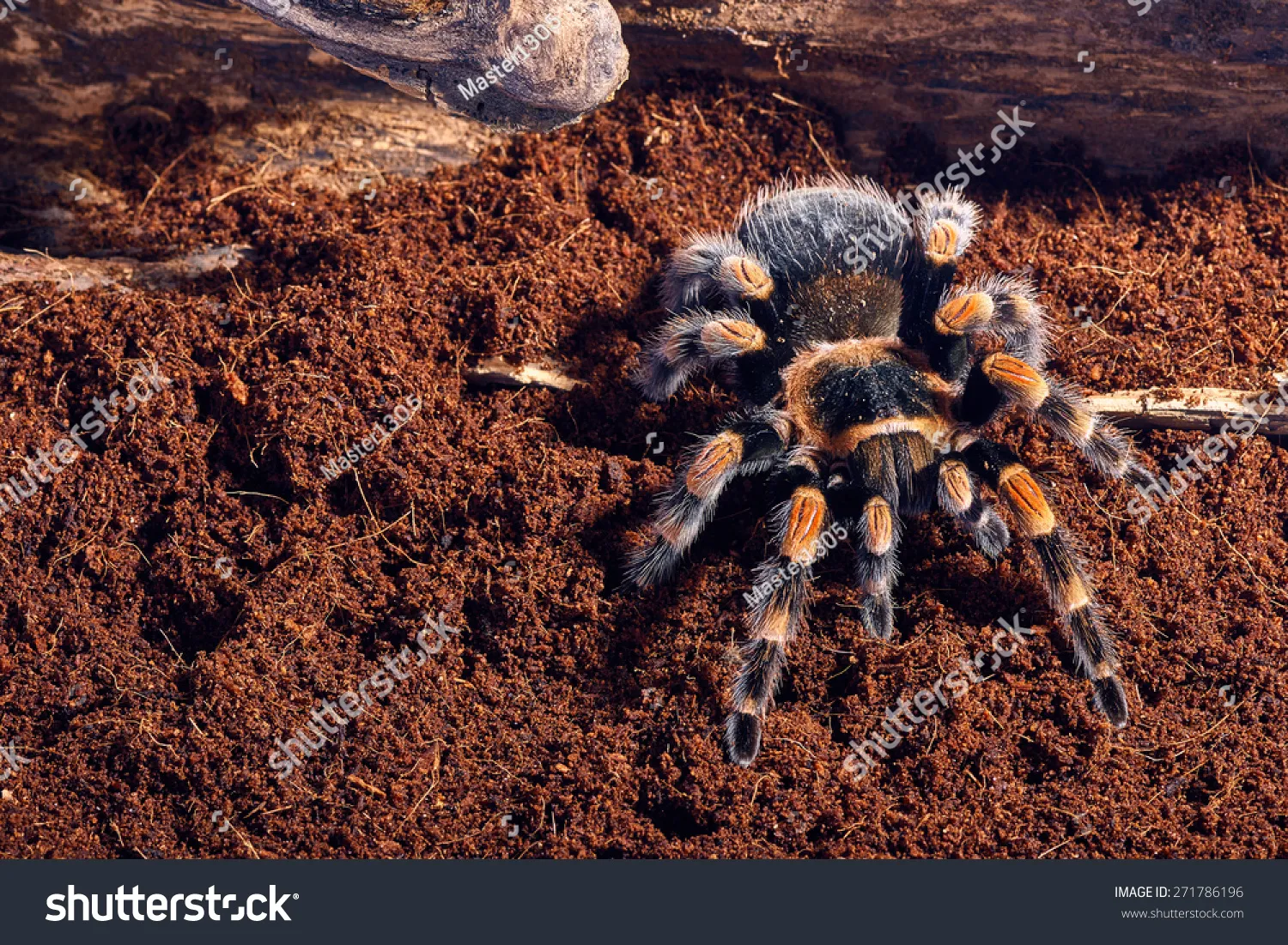
Regularly inspect the tarantula’s burrow for any signs of instability or damage. Over time, the burrow might collapse or become altered due to the tarantula’s activities or the environmental conditions. Look for any areas where the burrow has caved in or where the walls appear weak. If you notice any damage, gently repair the burrow by adding more substrate or adjusting the existing material. Be careful not to disturb the tarantula while making these adjustments. Maintaining burrow stability ensures that the tarantula has a secure and safe home. This includes ensuring that the substrate depth remains adequate and that there is no excessive compaction. Regular maintenance not only keeps the burrow in good condition but also allows you to monitor the tarantula’s behavior and overall health.
Maintaining Humidity Levels
Maintaining appropriate humidity levels is vital for the health of a Mexican Red Knee Tarantula, especially during molting. Use a hygrometer to monitor the humidity levels within the enclosure. The ideal humidity range for this species is between 60% and 70%. To maintain this level, mist the substrate lightly with water, but avoid saturating it. The frequency of misting will depend on the type of substrate, the ventilation of the enclosure, and the environmental conditions. You can also add a water dish to the enclosure, which will help increase the humidity. Ensure the water dish is shallow and that the tarantula can easily access it. High humidity is especially important during the molting process. Proper humidity not only supports healthy molting but also prevents dehydration and promotes overall well-being. Regularly monitoring and adjusting humidity levels is one of the most important aspects of tarantula care.
In conclusion, understanding and accommodating the burrowing behavior of Mexican Red Knee Tarantulas is essential for providing proper care and promoting their well-being in captivity. By providing the right substrate, enclosure, and environmental conditions, keepers can replicate the natural habitat of these fascinating creatures and allow them to express their natural instincts. This article provides a comprehensive guide on how to support and observe this behavior in a captive environment, improving the tarantula’s quality of life. By following these guidelines, tarantula keepers can ensure that their Mexican Red Knee Tarantulas thrive and display their natural behaviors, bringing joy and appreciation to their owners. Embrace the natural behaviors of your tarantula, and enjoy the rewarding experience of observing these amazing creatures.
